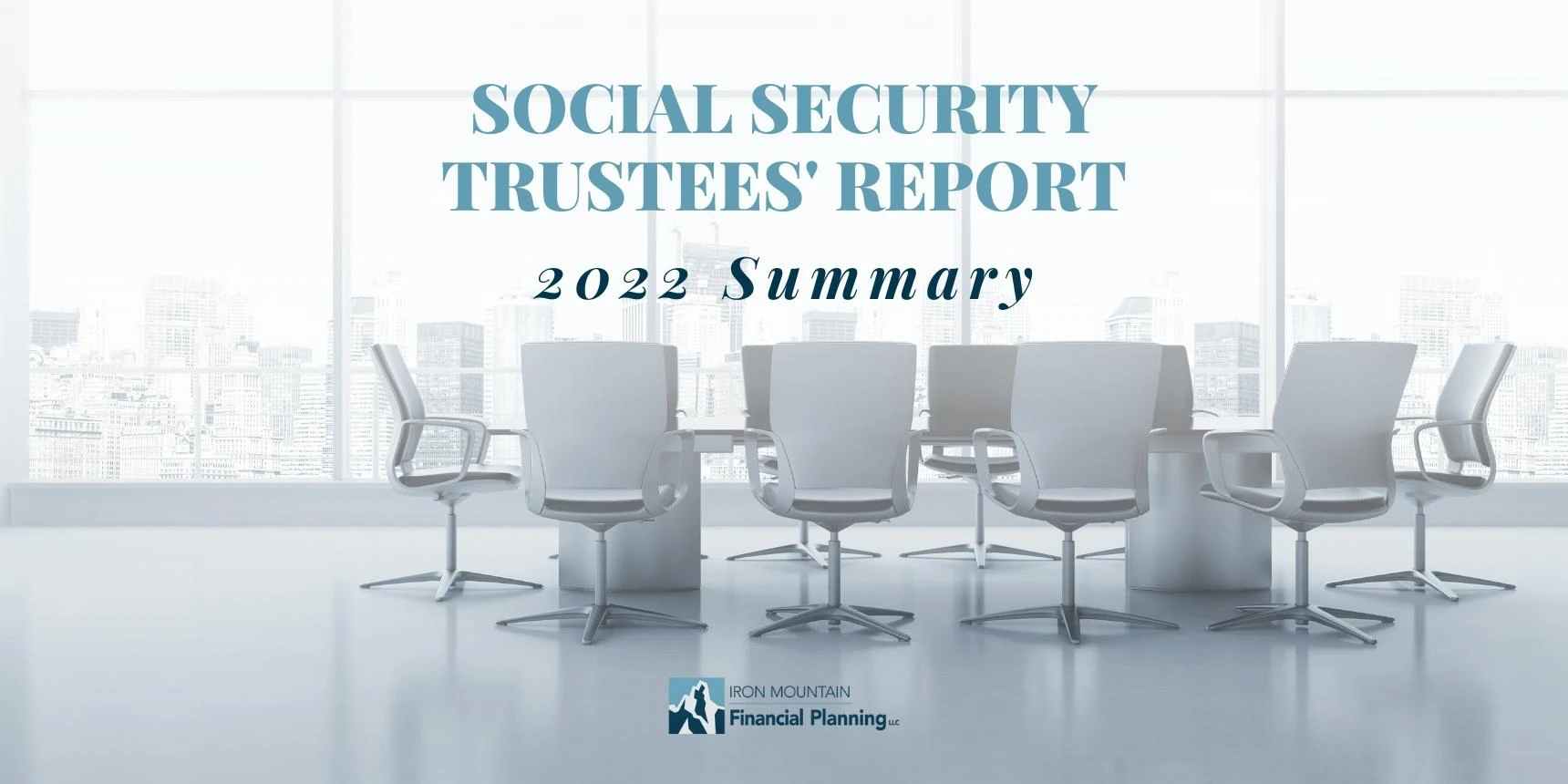The Social Security Board of Trustees once again released their annual report in June of this year. The report covering 2022 operations spans 275 pages that go into detail about the current financial status, future assumptions, and projections.
As in previous years, this most recent report continues the trend that the Social Security program faces long term funding shortages that will need to be addressed sooner or later.
The Social Security program is technically defined as Old Age Survivors and Disability Income (OASDI). This is split between the Old Age and Survivors Insurance program (OASI aka Retirement Benefits) and the Disability Insurance program (DI).
The Retirement Benefits Trust Fund and the Disability Insurance Trust Fund are legally two separate entities and I will focus the remainder of this article on the Retirement Benefits side of the ledger.
No Significant Change from Last year
The OASI Trust fund is projected to be depleted in 2034, one year later than reported last year. At that time, the taxes collected would be enough to pay 77 percent of expected benefits; AND the Trust Fund would be exhausted. All beneficiaries would face a 23 percent reduction in benefits, 12 years from now.
As all of you are aware, 12 years passes in a blink of an eye. The Trustees outline options, if implemented immediately, would resolve the long-term deficit in the Social Security program. They would include increasing revenues by an amount equivalent to a payroll tax rate increase of 3.24 percent; reducing current and future benefits by 20.3 percent or some combination of raising taxes and reducing scheduled benefits.
Delaying implementation of these options to 2035 increases the required payroll tax increase to 4.07 percent or the reduction of future benefits by 24.9 percent in order to keep the Social Security program solvent the entire 75-year projection period. It should be clear to all that the soon a change, or a combination of changes, is implemented, the small the change needs to be.
Same Amount of Options
While lawmakers have a broad list of options that could close the Social Security long-term financing shortfall, another consideration is allowing time for the changes to be implemented. Delays to implementing needed changes limits available time to gradually phase in changes and give today’s workers less time to plan for changes in benefits or taxes. If nothing else, this year’s report serves as an important reminder that the Social Security program’s funding shortfall needs to be addressed soon.
If you find yourself wanting to feel more confident about how Social Security retirement benefits fit into the puzzle of your retirement planning – it’s what I do for a living. Click here to schedule a Learn More call.
Here’s a link to the 2022 Press Release: https://www.ssa.gov/news/press/releases/2022/#6-2022-1
Some interesting highlights from the report include:
- Once again, projections in the 2022 report do reflect the potential effects of the COVID-19 pandemic. However, given the unprecedented level of uncertainty, the Trustees assumed that the pandemic will have no net effect on the individual long-range ultimate assumptions.
- An estimated 179.3 million people had earnings covered by Social Security and paid payroll taxes which contributed to the total income of $942.8 billion including the interest from the OASI trust fund and taxation of benefits.
- An estimated 56 million retired workers and survivors received retirement benefits at a total cost of $1,001.9 billion including $993.1 billion in benefits paid, $4.0 billion in administrative costs and $4.8 billion to the Railroad Retirement financial interchange.
- While the OASI trust fund reserves where at $2,811 billion at the start of 2021, they ended at $2,752 billion for a net loss of $59 billion – a trend expected to only accelerate from here forward.
- The expected depletion of the OASI trust fund in 2034 is one year later than previous year’s estimates.






